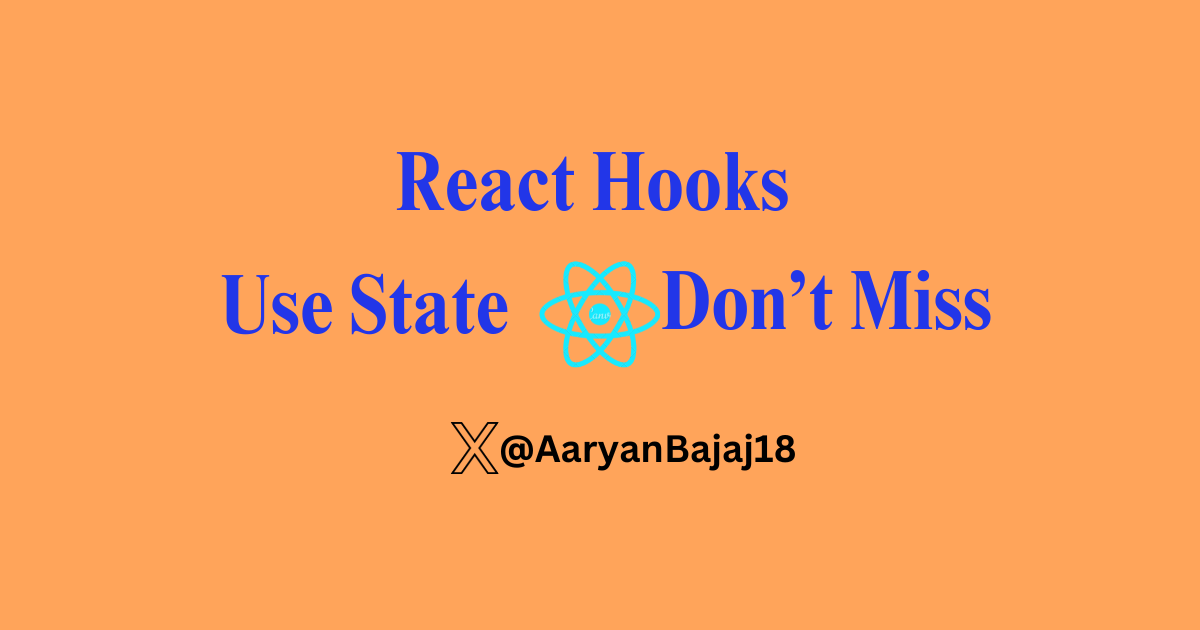React useState Hook in Real Life 💯
 AARYAN BAJAJ
AARYAN BAJAJ
Introduction
In the ever-evolving world of web development, React shines as a potent library for crafting user interfaces. But have you ever wondered how managing dynamic components in React can be made easier, almost like fine-tuning a dimmer switch rather than flipping a harsh on-off light? Let's explore how useState can streamline your React components.

Understanding useState: Your First Step Towards Simpler React Components
The useState hook is a fundamental tool in React that allows you to track state in function components. Imagine a digital scoreboard that changes from 0 to 1; this is exactly what useState helps manage, but for any piece of state in your application. This hook gives you the simplicity of function components with the power of state, previously only possible with class components

Best Practices for Using useState:
To keep your React applications running smoothly and your codebase maintainable, consider your state like a tidy desk:
Use Descriptive Names: Just like how clearly labeled folders help you find documents faster, descriptive names for your state variables help you and your team understand your code better.
Careful Initialisation: Start with the right initial state. This sets the tone for how your component behaves throughout its lifecycle.
Avoid Overuse: Overusing state can lead to performance bottlenecks. Like a cluttered desk, too many state variables can make it hard to keep track of changes and interactions in your component.
Combining useState with Other Hooks
When you combine useState with other hooks like useEffect or useReducer, you unlock the ability to handle more complex scenarios gracefully. Think of it as a painter who mixes various colors to create the perfect shade; similarly, combining hooks lets you elegantly manage complex forms and logic. This ability to mix and match hooks to suit your component’s needs showcases the flexibility and power of functional components in React.

Conclusion
useState is more than just a tool; it's your gateway to writing cleaner, more efficient React components. Whether you're managing simple states like a toggle switch or orchestrating complex forms with multiple inputs, useState provides the functionality you need with minimal complexity. Embrace this hook, and you'll find that building dynamic interfaces in React can be as straightforward and enjoyable as adjusting the lighting in your favourite room.
Subscribe to my newsletter
Read articles from AARYAN BAJAJ directly inside your inbox. Subscribe to the newsletter, and don't miss out.
Written by

AARYAN BAJAJ
AARYAN BAJAJ
Hi Everyone 👋🏻 , I'm Aaryan Bajaj , a Full Stack Web Developer from India(🇮🇳). I share my knowledge through engaging technical blogs on Hashnode, covering web development.